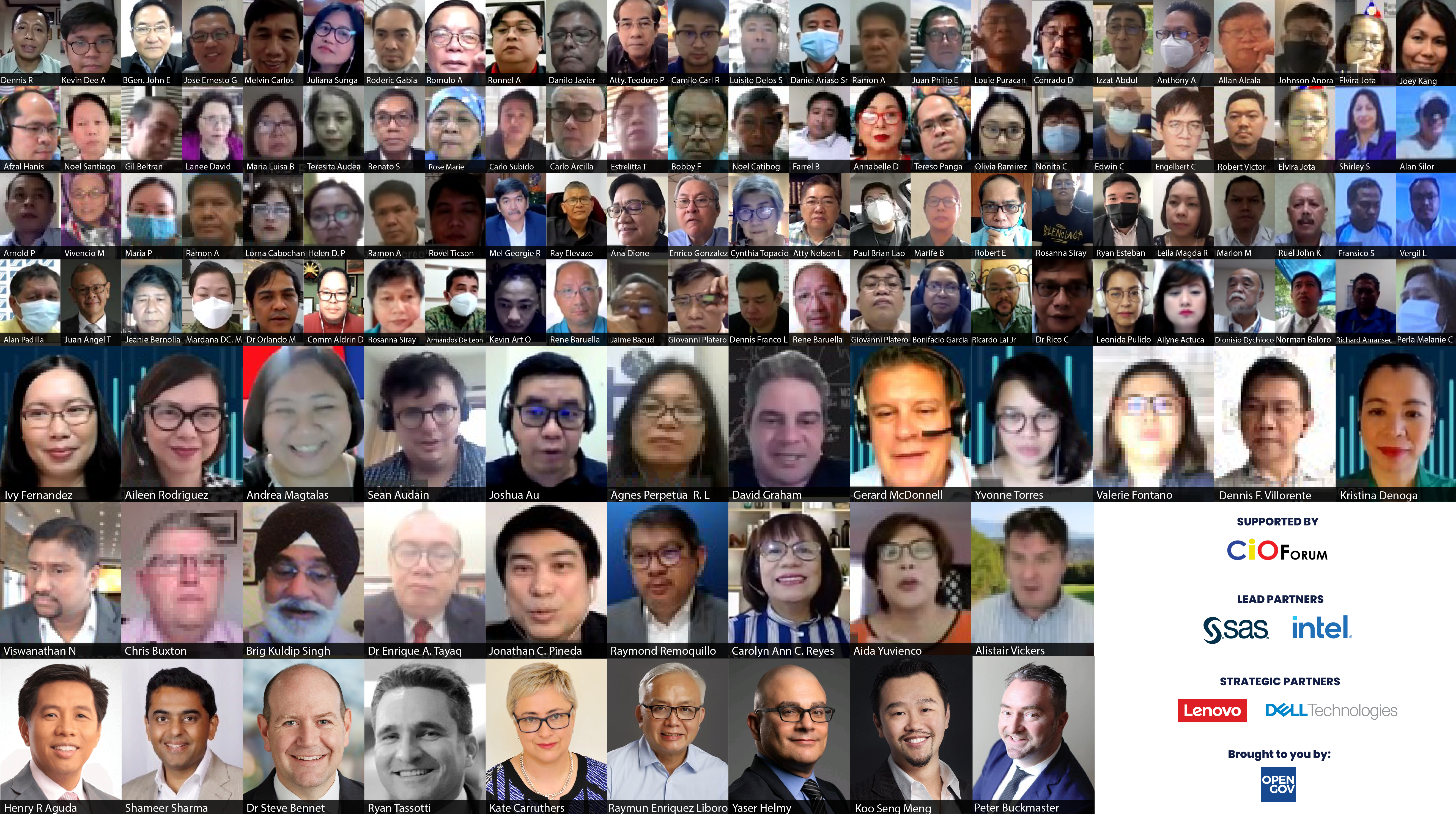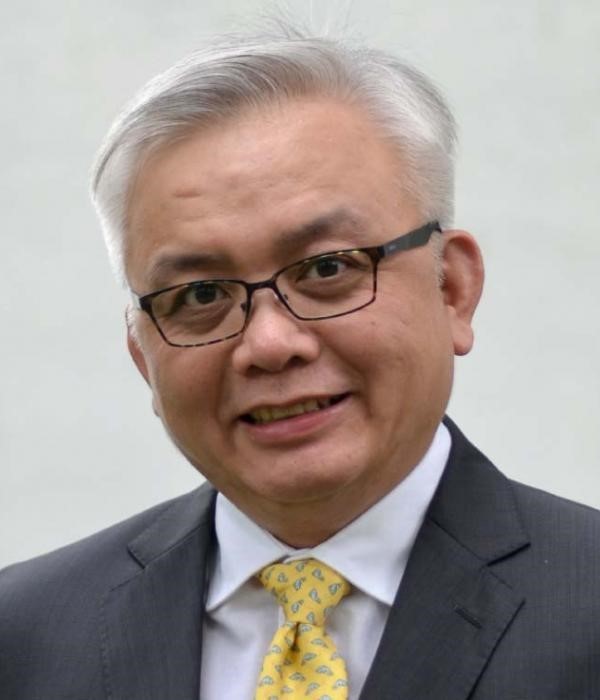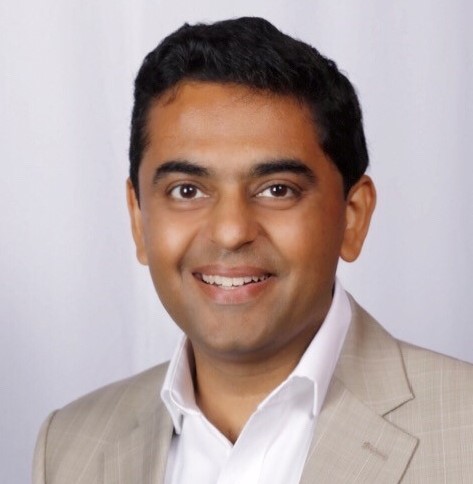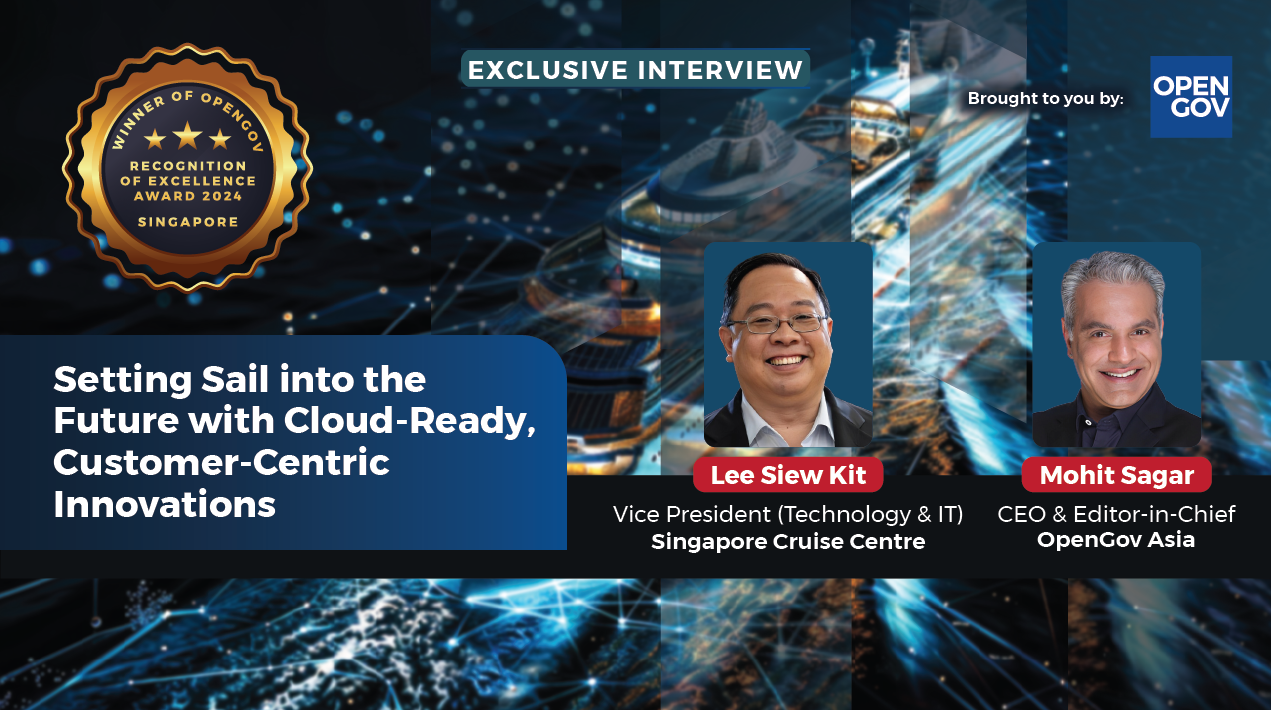
This is Part II of a two-part series. Read Part I here.
In this increasingly VUCA world, governments and businesses across the globe are still looking to ramp up their digital transformation to better citizens and clients in the post-COVID-19 era. This was the focal point of the discussion during the Philippine OpenGov Leadership Forum 2021 – Virtual Edition Day 2 that brought the key decision-makers and influencers together for a strategic level discussion on the issues that matter the most.
Convening the brightest digital minds for a strategic level discussion on the issues that matter the most, the Philippine OpenGov Leadership Forum offered a unique way of tackling challenges in its virtual edition. Intentionally planned, every activity and facet of the event was designed to let delegates garner exclusive insights from the digital leaders as well as demonstrate their thought-leadership.
As always, the forum provided intimate interaction between key ICT leaders from the Public Sector and the Financial Services Industry who influence and determine digital strategies across agencies and organisations.
Apart from informative presentations from renowned speakers, this year’s Forum continued its award-winning OpenGov Gamification Table (OGT) format in the new OpenGov Gamification Virtual Rooms (OGVRs). Every OpenGov Gamification Virtual Room was a virtual heuristic exercise allowing delegates to learn from varying decision-making scenarios just as they would in the physical world.
Philippines’ Road to Digital Government in the New Normal: Citizen-centric and service-oriented

The opening presentation was from Raymund Enriquez Liboro, Privacy Commissioner and Chairman, National Privacy Commission. He shared how digital transformation is being promoted as a national strategy to navigate the new normal and to achieve service orientation, procedural efficiency, and behavioural transformation into the very fabric of government operations.
Modern medical science now relies heavily on data and technology. For example, data and technology helped scientist determine the immune responses against the virus. Similarly, Raymund noted that about nine months into the pandemic, humanity was able to create a COVID-19 vaccine at record speed – in fact, several viable candidates were on the table. As in the health sector, information derived from data is crucial in the public sector’s decision-making procedures and service development.
Knowing its role in citizen welfare, the Philippine government utilised data and technology when it launched an online contact tracing app called StaySafe.PH in the battle against COVID-19. the app is the nation’s official health condition reporting, contact tracing and social distancing system that empowers the public in the fight against COVID-19.
By aggregating all reports, StaySafe.PH enables the government to immediately respond to peoples’ needs and make informed and timely decisions to keep Filipinos safe during this pandemic. The system, which is made available in desktop and mobile version, aims to complement the management of COVID-19 cases, remind individuals to observe distancing measures, record and monitor possible COVID-19 symptoms, and augment manual contact tracing processes.
Raymund firmly believes that digitising the government offers great benefit to the Filipino people and that data is the most powerful asset for any institution in this modern age. But just any asset or resource, data must be managed correctly to be useful. No matter how much data is collected and processed, if it is not analysed or made sense of, it cannot nor will not serve the intended purpose.
The country’s National Privacy Commission (NPC), therefore, endeavours to protect personal data – especially COVID-19 related – from misuse that can lead to discrimination, physical assault and other outcomes more harmful than the virus itself. Positioned as an enabler and as a protector, the NPC issues policies and guidelines to steer the government as well as the private sector in terms of data management during the pandemic.
In the age of COVID-19, poor data governance can do more harm than good. Poor data may give inaccurate views of a situation leading to poor decision-making. Lack of understanding of trends makes it hard to identify future opportunities and bad data prevents immediate responses in fast-developing situations. The government must adopt a digital data governance framework that will define data standards, its required roles and responsibilities within the government for governing and managing digital data. The framework can help determine a holistic way to control data assets so that the government can get the most value from the data.
A digital government should be citizen-centric and service-oriented. It should focus on providing the best services to Filipinos and these services should be accessible and integrated within different government agencies trying to respond to citizen needs despite changing times. A digital government promotes transparency, public accountability and access to information.
A digital government provides its citizens with accurate information uploaded almost in real-time through government webpages and portals. Digitally-enabled services allow the government to function with minimal dependence on the traditional work setup. The digital government ensures citizens have a seamless experience with interacting with the government for services in the digital space.
Only as good as its team, the government should set proper foundations in place and prepare its people for a complete digital transformation.
In terms of a digital government being integrated with the same digital data and information, Raymund cited the example of the country’s Philippine Identification System – PhilSys. Designed as an enabling platform, the system boosts digital transformation of existing services and systems to reduce costs, time and fraud.
It underpins sectoral IDs and databases to enhance accuracy, interoperability, and integrity. The PhilSys unlocks new services and systems for the digital economy, especially online transactions. The PhilSys-enabled services will allow governments and businesses to use technology to change how they do business, shifting to transactions that are paperless, automated and online.
Finally, perhaps the most important factor in a digital government is its ability to protect data. A digital government should not sacrifice data protection and data privacy resilience in its mission to digitise its services and trying to make information accessible.
It must be aware that while data may offer tremendous benefits to society, it is always accompanied by data privacy threats, risks, and harm that is directly proportional to the amount of the data collected used and processed. Recognising the importance of personal data for the benefit of society while at the same time mitigating and preventing risks should be at the heart of every government’s digital transformation. Governments have complete faith in systems, making citizens feel less threatened of availing public services that access their data.
To end his presentation, Raymund said that the government must continue to protect its citizens in the new normal and should be responsible stewards of data. With the help of technology and data, the world will beat the COVID-19 crisis.
Smarter, Safer, and Resilient Cities: Re-opening Our Cities in the Face of COVID-19

The session moved to a presentation from Sameer Sharma, Global General Manager, Smart Cities, Intelligent Transportation & IoT, Intel Corporation about learning how the Internet of Things and data can be leveraged to monitor, alert and protect citizens in modern cities as they begin to re-open.
Data clearly shows there is an explosion in populations in major cities all over the world; 55% of the world’s population lives in cities and is expected to rise to 68% by 2050. With this surge, governments have been striving to find ways to make urban systems and infrastructure more efficient and effective. However, with COVID-19 hitting the world at the end of 2019 Q4, it has created a major pause in city innovation in specific areas.
The rapid spread of the virus affected countries globally on a massive scale. It severely hit areas like trade where the value of global exports increased by 4,000% in the last century; and the travel industry where 4.5 billion passengers boarded flights in 2019 pre-COVID. And on a personal level, human interaction was also reduced by the pandemic.
The pandemic made governments and policymakers looked at their vision for cities – such as better access to education, better healthcare and more opportunities for their citizens – in a whole new light.
Across the world, there are currently 33 megacities (>10 million people), 4,000 cities with 100K+ population and 2.5M towns. Serving this global population are 1.4 billion cars, 246 million trucks, 17 million buses, over 50,000 ships, 25,000 commercial planes and 1.3 million kilometres of railways.
All of these must be and can be managed even in an ongoing crisis. Improving and strengthening cities where the working society is in will be the key and, in the age of COVID-19, Sameer is convinced, that resilience will be critical; new threats and challenges must be anticipated and planned for.
Agencies and organisations across the board have tried to mitigate the effects of the pandemic by using technologies and new operational frameworks. Sameer reminded the delegates that legacy infrastructure cannot scale but disruptive technologies can make everything possible. Digital technologies must overlay the physical world, especially cities.
COVID-19 created shifted the focus specific sector improvement to overall infrastructure upgrade – that is, transforming ‘spaces’ to ‘smart spaces’. It is imperative to learn how to adopt technologies like AI, Cloud, 5G and IoT.
With the re-opening of the economy, safety and sanitisation will take precedence. Automated air filtration systems will be the norm in offices, commercial spaces, and industries where the physical presence of people is a must.
Organisations that use these spaces can utilise technology to upgrade their infrastructure. There are a plethora of tech-based solutions that enable smarter spaces: automated room access, keyless and touchless entry, touchless and on-demand elevators, ambient temperature control, fresh air circulation and quality monitoring, UVD disinfecting robotics, face mask and fever detection using AI, people-counting and spacing-analytics and digital contact tracing initiatives just to name a few.
With fears of the virus in public transport, for local, shorter commutes, most likely, people will use personal vehicles. Where longer travel is necessary by air, road, rail or sea, security agencies will add healthcare checks and screenings.
Schools and universities will opt to use online tools; hotels and restaurants will transition to digital menus, delivery models and contactless payments; retail will be increasingly driven online.
Intel’s Smart City Vision, Sameer shared, is built on effective policies, governance and financing. Transportation, buildings and energy, environment, healthcare, public services and homes stress citizen wellbeing and safety. Intel is a strong advocate for and champions the use of sensors and edge computing, wireless tech, access and core networks, cloud and analytics and AI and Automation to achieve their dreams of a Smart City.
Nations must understand that resiliency is the key and technology enable it. Decision-makers should think big, not just thinking about smarter cities, but better cities. The mantra is to start small and get going with obvious projects and opportunities; then learn, adjust, and iterate.
Sameer urges governments and organisations to the right partners across the industry to build sustainable cities for citizens. In closing, he quoted Nelson Mandela, “It always seems impossible until it’s done.”
Smarter Way Forward – Essential Technology Solutions for a Digitally Connected Environment

The forum next welcomed Yasser Helmy, APAC Commercial IoT Solutions Sales Director, Lenovo who spoke on the future of work that is connected and organisations needing an ecosystem of solutions to make it easier for their employees to get back to a new, safe, and productive workplace.
Yasser conceded that COVID-19 redefined how we think about knowledge work. Now, there is a more dynamic workforce; a workforce with different expressions because of lockdowns and restrictions. The new workforce now has greater flexibility, able to work from anywhere -, be it at home, the office or even third options like dedicated workspaces, cafes, etc. The priority has shifted to a workplace’s experience and safety. And in the new normal brought by the pandemic, digital workplace tools are becoming more essential.
A study says that 72% of knowledge workers prefer a mix of remote and office work, promoting a hybrid approach. About 50% are happy to work remotely between 3-5 days a week without impacting productivity. However, 54% miss collaboration and quality of relationships in the office. The inference is that over half will return to the old working setup sooner than later.
Now, more than ever, employees expect flexibility and safety in addition to a more personalised experience in the workplace. In terms of organisational operations, more companies are trying to take advantage of this new norm working setup by increasing on-demand workplaces and by reducing traditional office spaces that reduce their operational costs. These new workplaces have transformed into destinations that attract and retain talent, support innovation and productivity – unleashing employees and collaboration. People are found to be happier in these creative and innovative workspaces.
Yasser expanded on a three-step framework to help organisations that have people who are returning to their workplaces amid the new normal. First is controlling who gets into the locations, by conducting elevated temperature screenings and touchless building access points such as wave to unlock doors, smartwatches, and mobile apps. The second step is managing behaviours within the space with policy communications such as information regarding certain emergencies and urgent issues that involve employees and thorough workspace monitoring from macro down to a micro perspective. Lastly is being prepared to respond to incidents via onsite contact tracing efforts.
The benefits of a workplace transformation are real, Yasser noted emphatically. He cited examples of global corporations that have already begun to optimise workspace and are now able to provide near real-time occupancy insights with space analytics.
Global energy technology companies leverage augmented reality solutions for employee training and incident-response drills. Some are enabling building operators to deliver frictionless/contactless access, further reducing on-premises cost with the use of mobile-based access controls.
Yasser concedes that most organisations think of the new normal as strictly working from home, but that is not the case. The new normal means that there should be an integration between the old office setup pre-COVID-19 and the ability to work from anywhere. Ultimately, people must have the best experience, regardless of the setup of their workplaces.
Interactive Discussion
After the informative presentations from renowned speakers, the forum moved to an interactive discussion session a time of high-level engagement with delegates from various government agencies, FSI, education and healthcare organisations. Aided by polling questions, this session is designed to provide live-audience interaction, promote engagement, hear real-life experiences and impart professional learning and development for the participants. It an opportunity for delegates to gain insight from subject matter experts, share their stories and take back strategies that can be implemented in their organisations.
The opening poll inquired about delegates’ primary objective in their digital transformation strategies. Close to half (48%) of the delegates said their digital transformation is meant to improve their business processes while 43% said it is for the improvement of citizen and customer experiences.
On the question about the biggest challenges delegates face in implementing digital strategies, a third ( 32%) voted legacy systems and technologies that lack integration capabilities were the biggest. Just under a quarter (24%) signalled that the lack of skilled teams is their primary obstacle.
Participants were asked how they measure the success of their digital transformation efforts. Over two-thirds (68%) said that they are still looking for ways to measure it effectively while a fourth (25%) indicated they already have qualitative and quantitative methods in place.
Delegates were then asked about their most important IT priorities. A majority of the delegates (64%) said digital transformation and innovation are their top priorities while 33% said that improving efficiencies and reducing maintenance costs were the most pressing aspects of their IT strategies.
In terms of IT structures, delegates were asked how AI and Data Analytics impact or improve their current digital transformation strategies. Again a majority (64%) voted faster access to data to improve pre-emptive analysis can be achieved using AI and Data Analytics while 23% said that they need AI-ready infrastructures to manage large sets of data.
On being requested to share their organisations’ biggest pain points in the Big Data value chain, 45% went with data accessibility and sharing as their biggest pain points while 27% said data integrity was the real problem for their organisations.
Regarding the maturity of their data strategies, 40% conceded that it was currently siloed with pockets of data all around the organisation. Over a quarter (26%) indicated that a traditional approach with a central team managing data with all the analytics drivers through their data warehouse.
When asked to rate their organisations’ use of data and data analytics tools for decision-making purposes, 48% said that they needed improvement and better tools while 26% said they were doing good with adequate tools were in place.
Differentiating cloud providers for various workloads got a mixed bag of responses with voters almost evenly divided between price, service, performance and integration.
This led to delegates being asked how much of their organisations’ mission-critical/data-sensitive workloads are to be put onto public clouds this year. About 39% said that less than half of their workloads are set to be put onto the public cloud while 32% said more than half is earmarked for public cloud adoption.
On the issue of cloud adoption, delegates were polled on the biggest challenge CIOs face when complying with the government’s direction to go on the public cloud. About 40% agreed that security poses the biggest challenge, 25% said governance was an issue and 21% said skills to mitigates are lacking.
More mixed results were seen regarding delegates’ main concern for security operations in their organisations. The votes were almost evenly divided among advance and zero-day attacks, difficulties in determining actual attacks due to noise, cybersecurity skills shortages, automating responses and actionable threat intelligence.
Respondents were asked to rate their current level of security operations efficiency to detect and respond to attacks. Almost 44% said their security operations are currently based on log management, correlation aggregation, and basic reporting, while 37% said it was very good in terms of a partial mapping of the prediction, detection and response areas, but needs improvement.
Questioned on what drives their cyber resilience plans, almost half (49%) indicated compliance and incidents were critical factors for their cybersecurity strategies and programmes.
With COVID-19 still making its presence felt in most parts of the world, the delegates were asked about the areas most impacted by the ongoing pandemic. Over 38% said the well-being of their staff took a hit, 35% said their productivity was greatly affected, while 27% said they were able to launch new initiatives because of COVID-19.
Knowing that the pandemic accelerated the digital transformation especially for the working sector, delegates were asked about their perceived outcomes of a digital and automated workplace. About 42% believed that there will higher productivity in the future. The remaining votes were divided into greater collaborations, greater digitalisation, improved employee engagement and resource savings.
On the current challenges they face in the adoption of a digital workplace, 44% said the lack of effective technologies to optimise staff productivity and performance is an issue. Over 38% said the lack of executive leadership to drive a culture of process improvement and effective change management is their biggest challenge. Only 18% said that no clear articulation of digital workplace benefits and a supporting business case hinder their adoption of the new working setup.
Finally, delegates shared their organisations’ capabilities in supporting a remote workforce. Just over half (54%) indicated a lack of collaboration tools for seamless remote work (but they are looking for solutions). A quarter (26%) said they are not looking to implement a fully remote workforce while 20% said they already have the tools to implement a seamless remote working setup.
Conclusion
The Philippine OpenGov Leadership Forum 2021 Virtual Edition ended with the closing remarks from Mohit who thanked the delegates, speakers and sponsors for their active participation and keen insights.
Feedback and conversations with participants clearly showed the need and demand for such interactive forums. With ongoing crisis-mitigation efforts and vaccination rollouts from both the public and private sector, Mohit was optimistic that OpenGov would once be able to host physical sessions or, at the very least, organise a hybrid version in the near future.
In this rapidly evolving and VUCA environment, it is important to learn from one another and also support each other. Adoption and adaptation of existing solutions, platforms and models is a far quicker way of getting things done. And what better space to collaborate than events like the OpenGov Leadership Forum.
For more of The Philippine OpenGov Leadership Forum Virtual Edition: “Embracing Digitalisation to Navigate the New Normal” read Part I here.
















